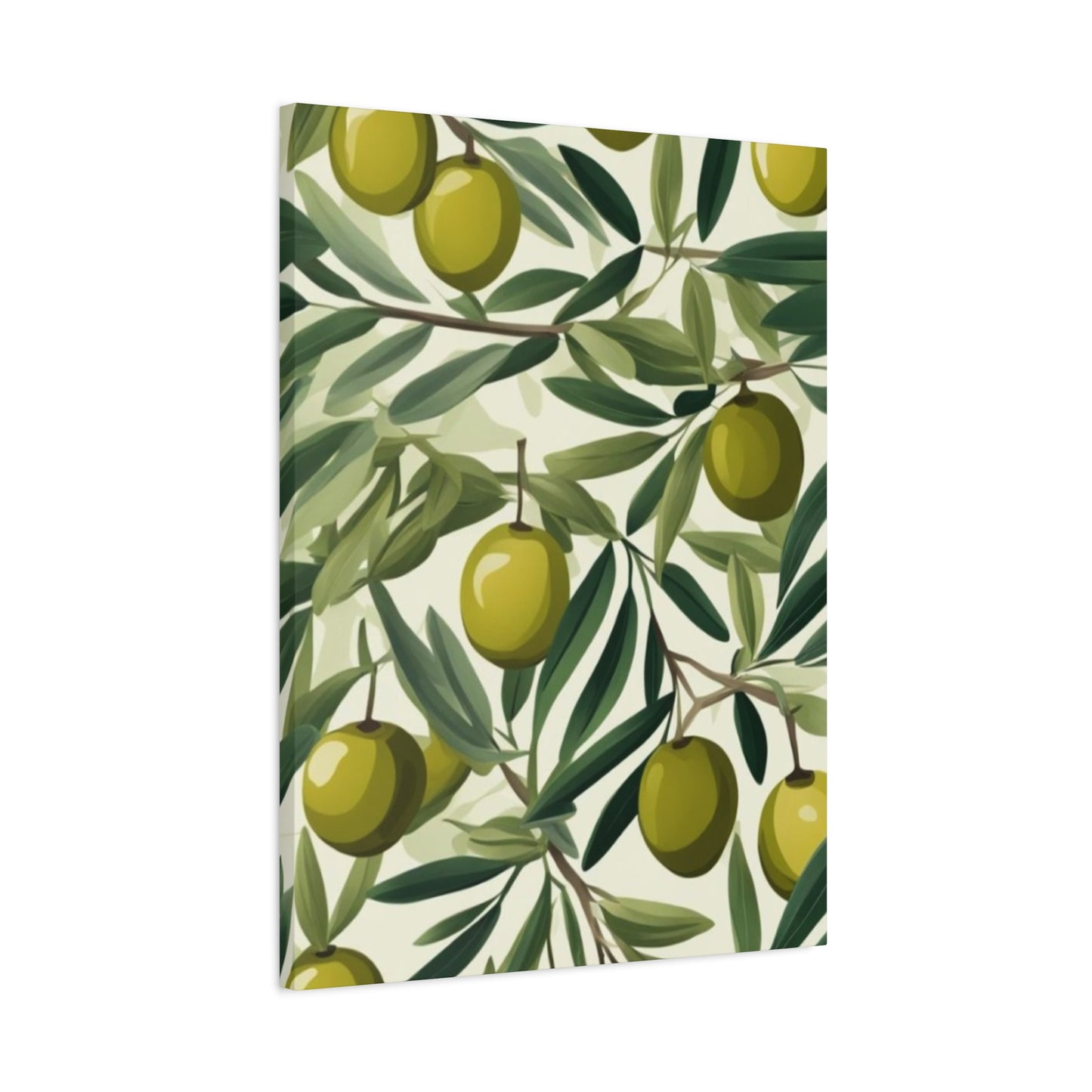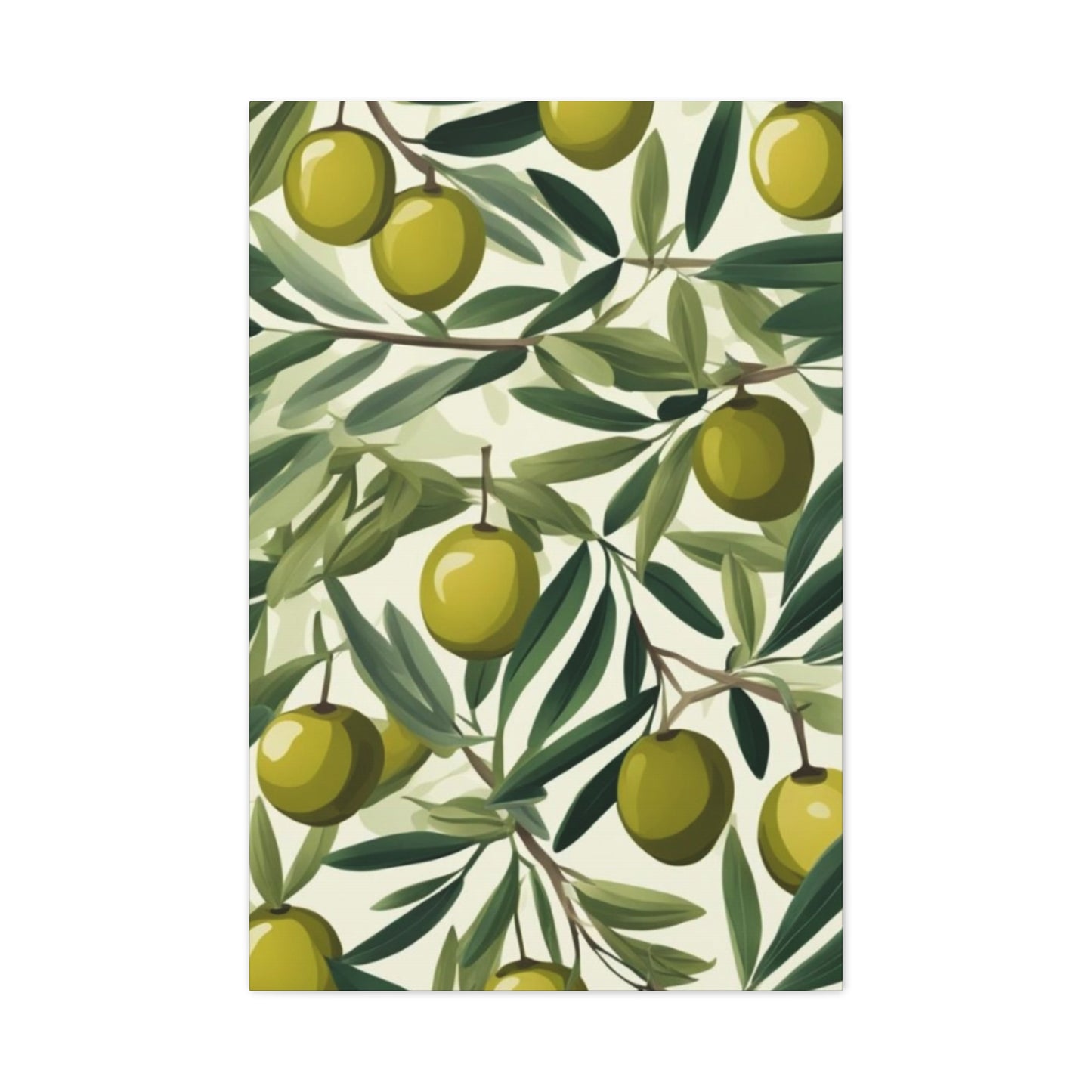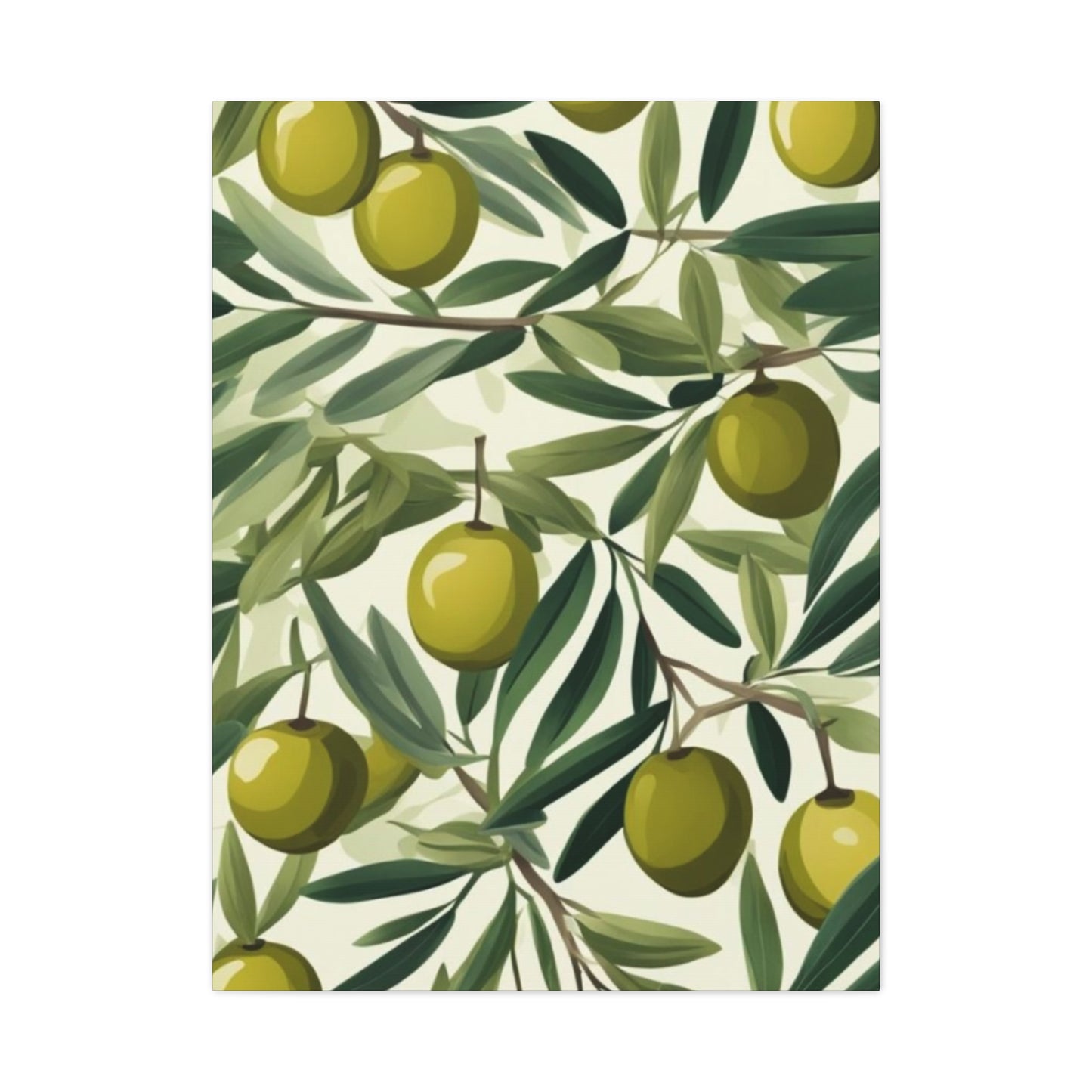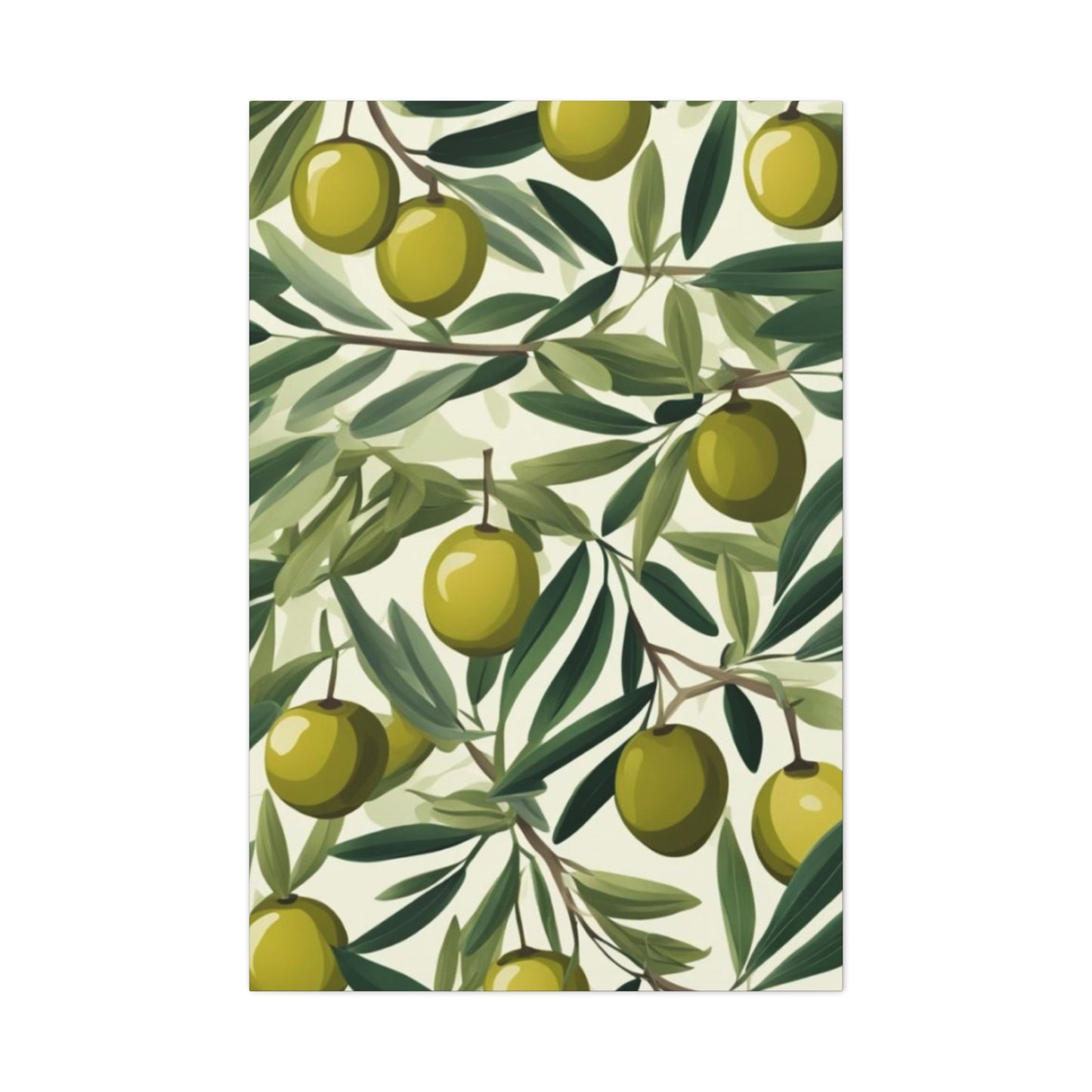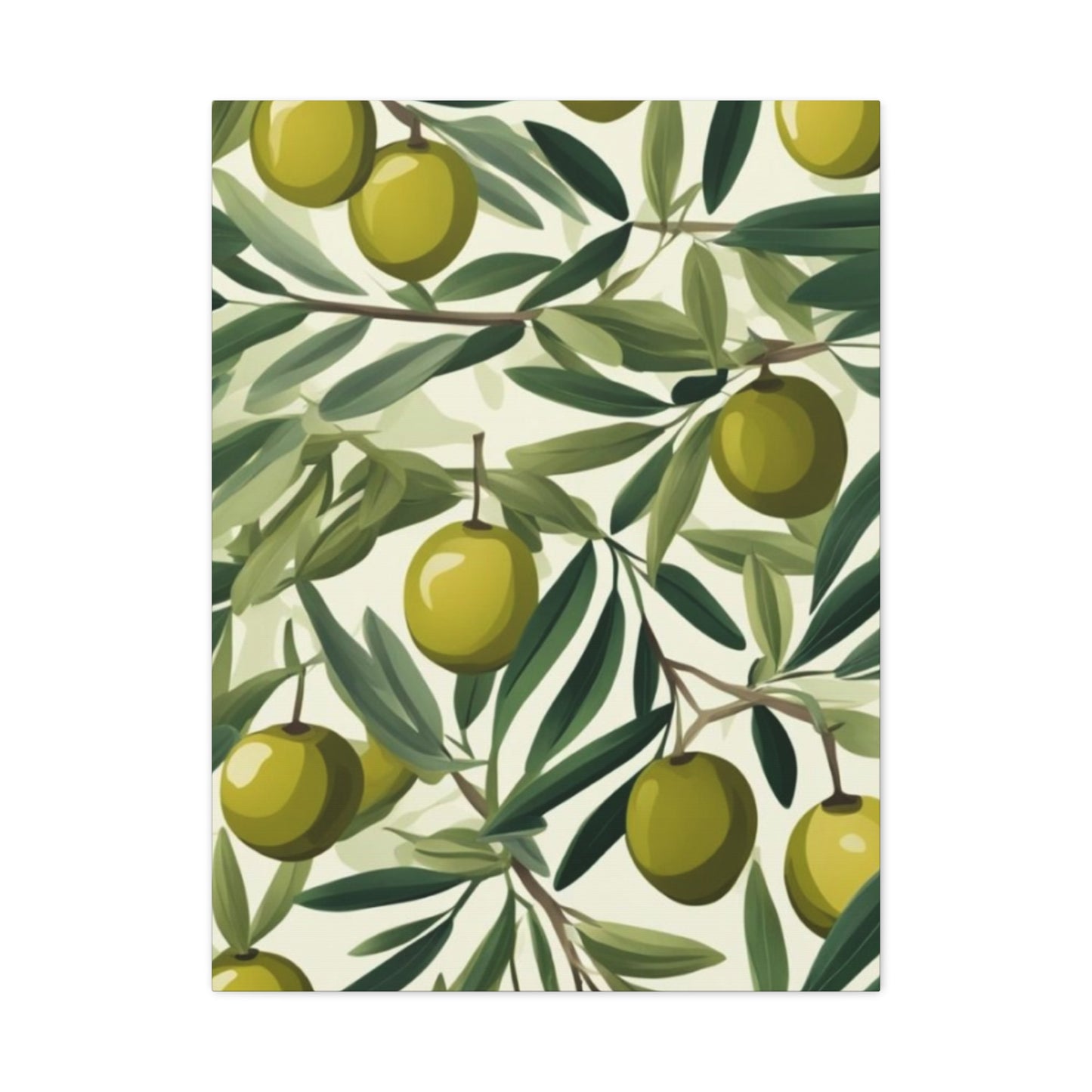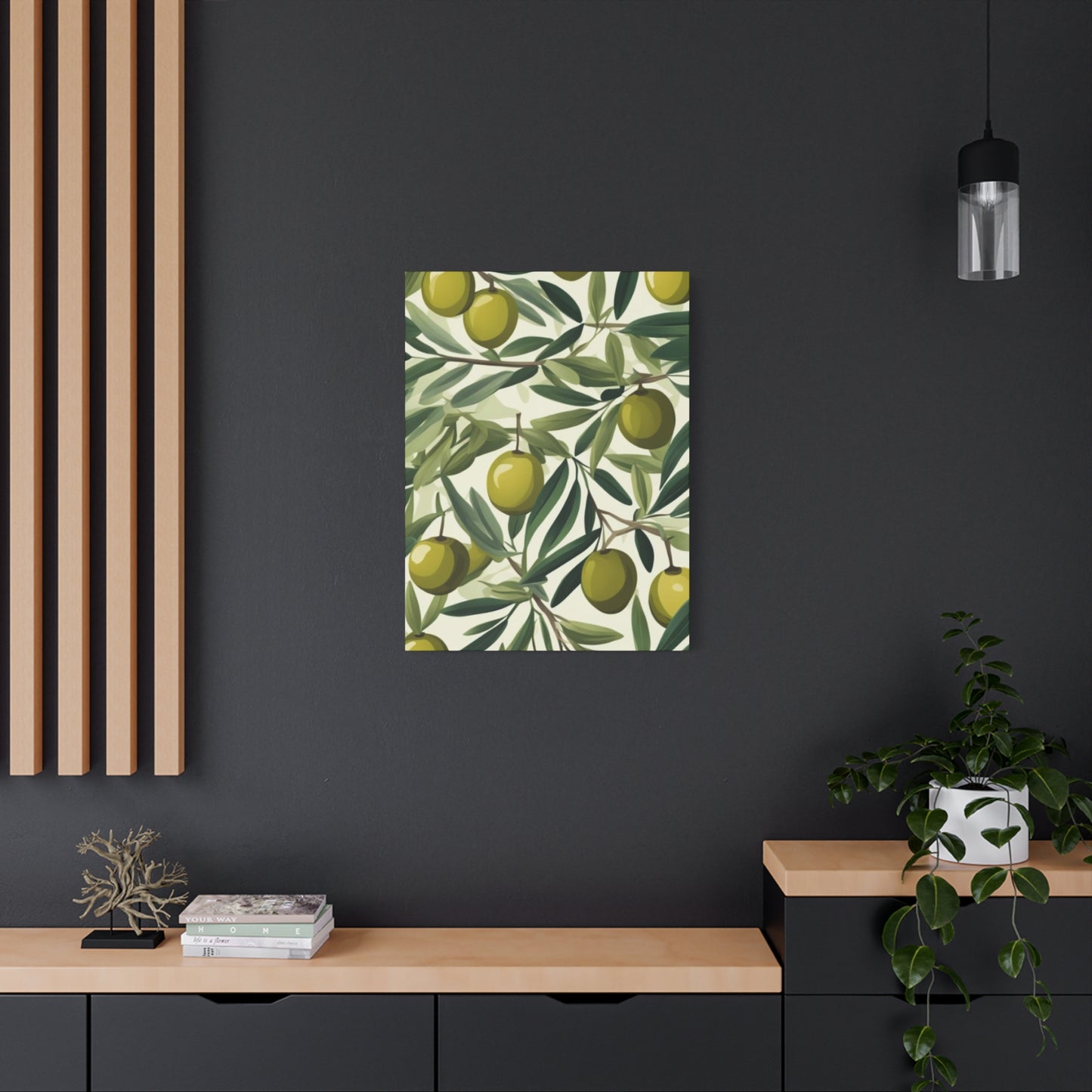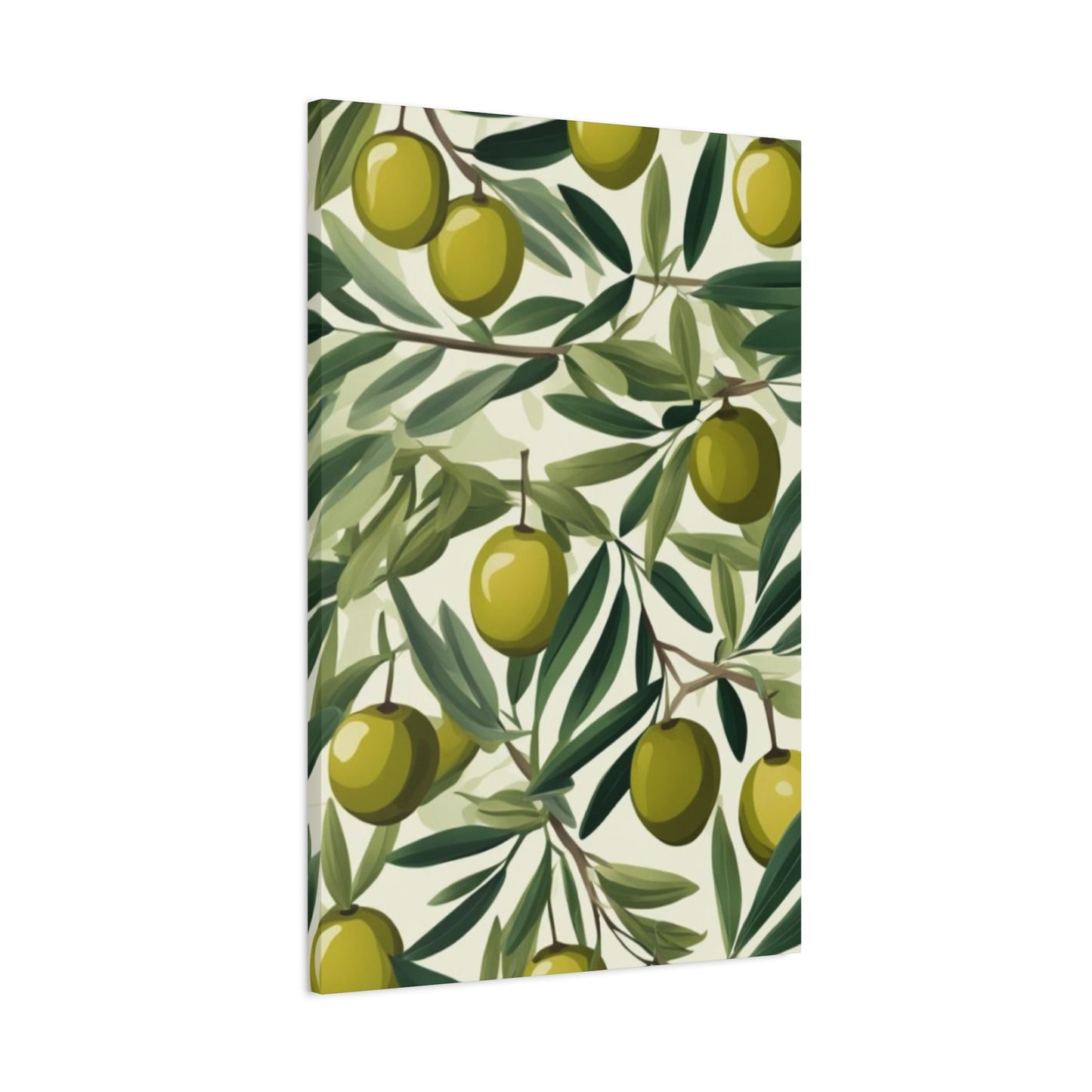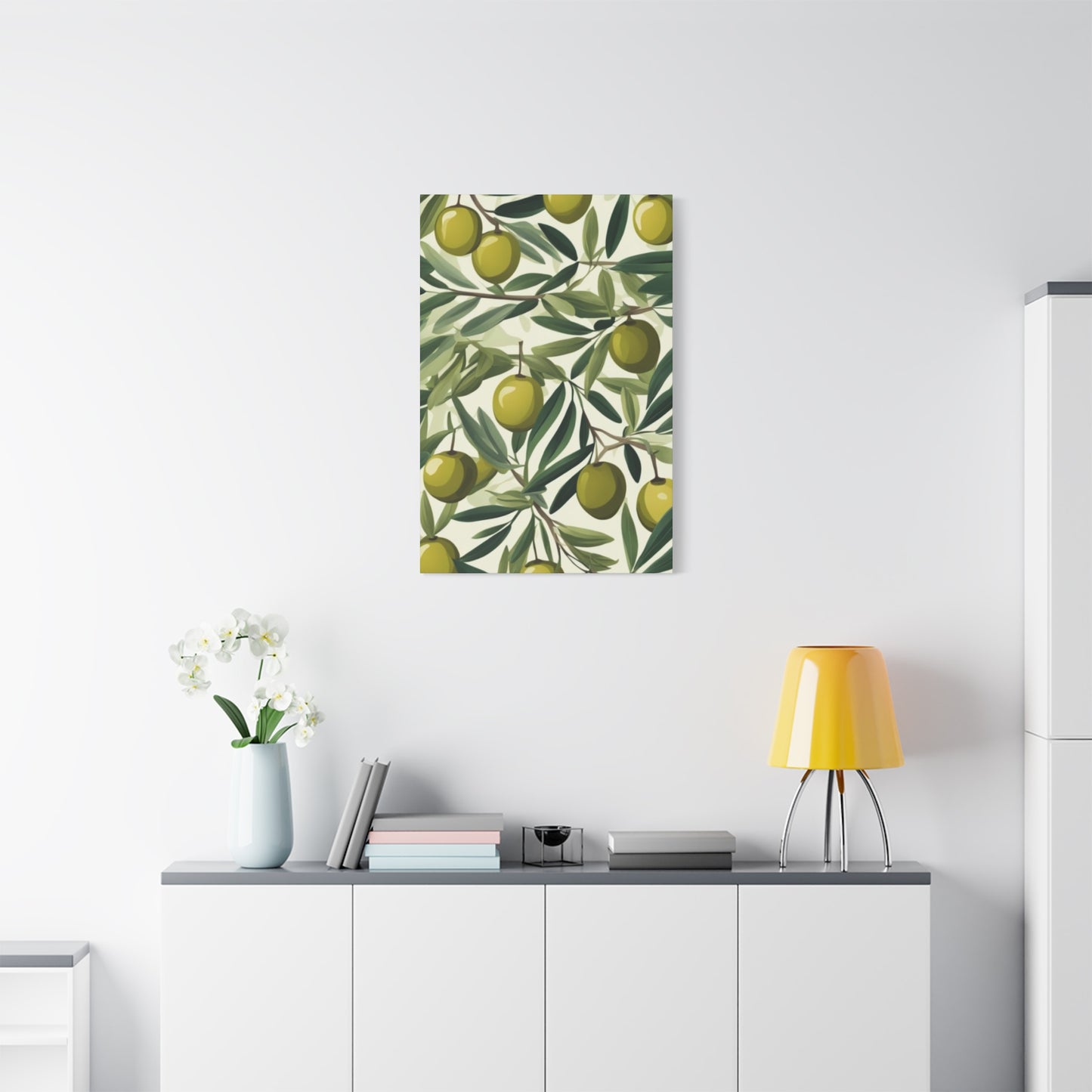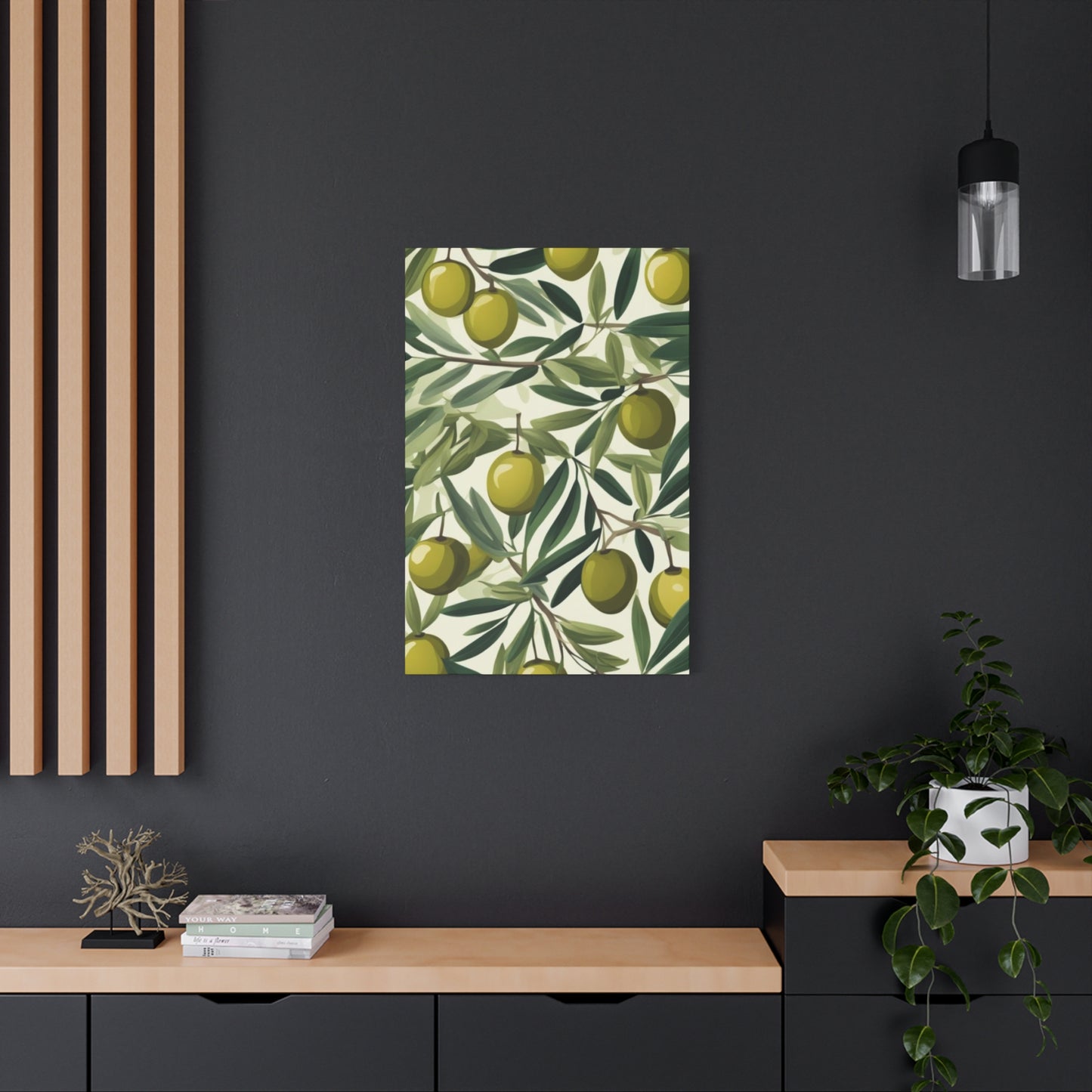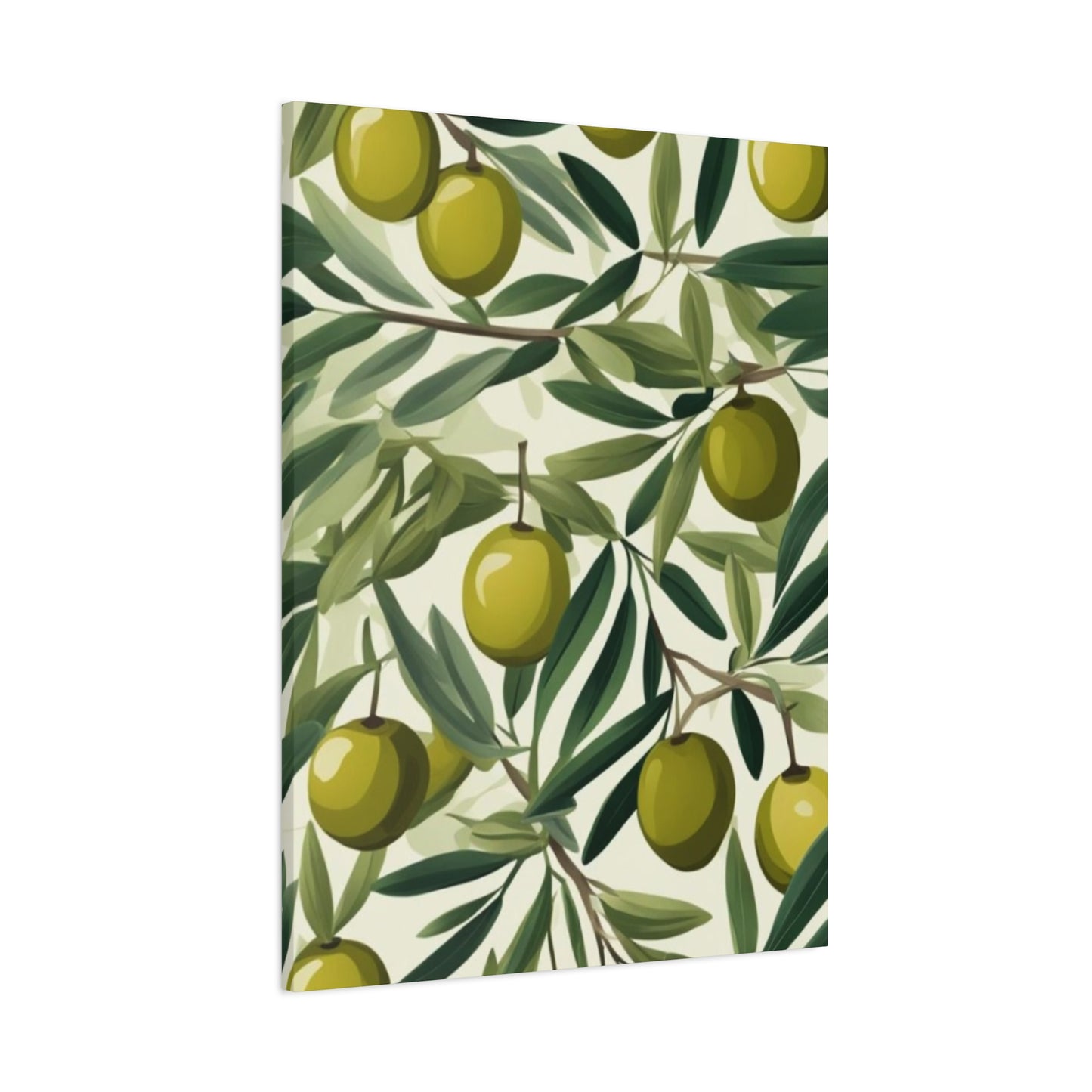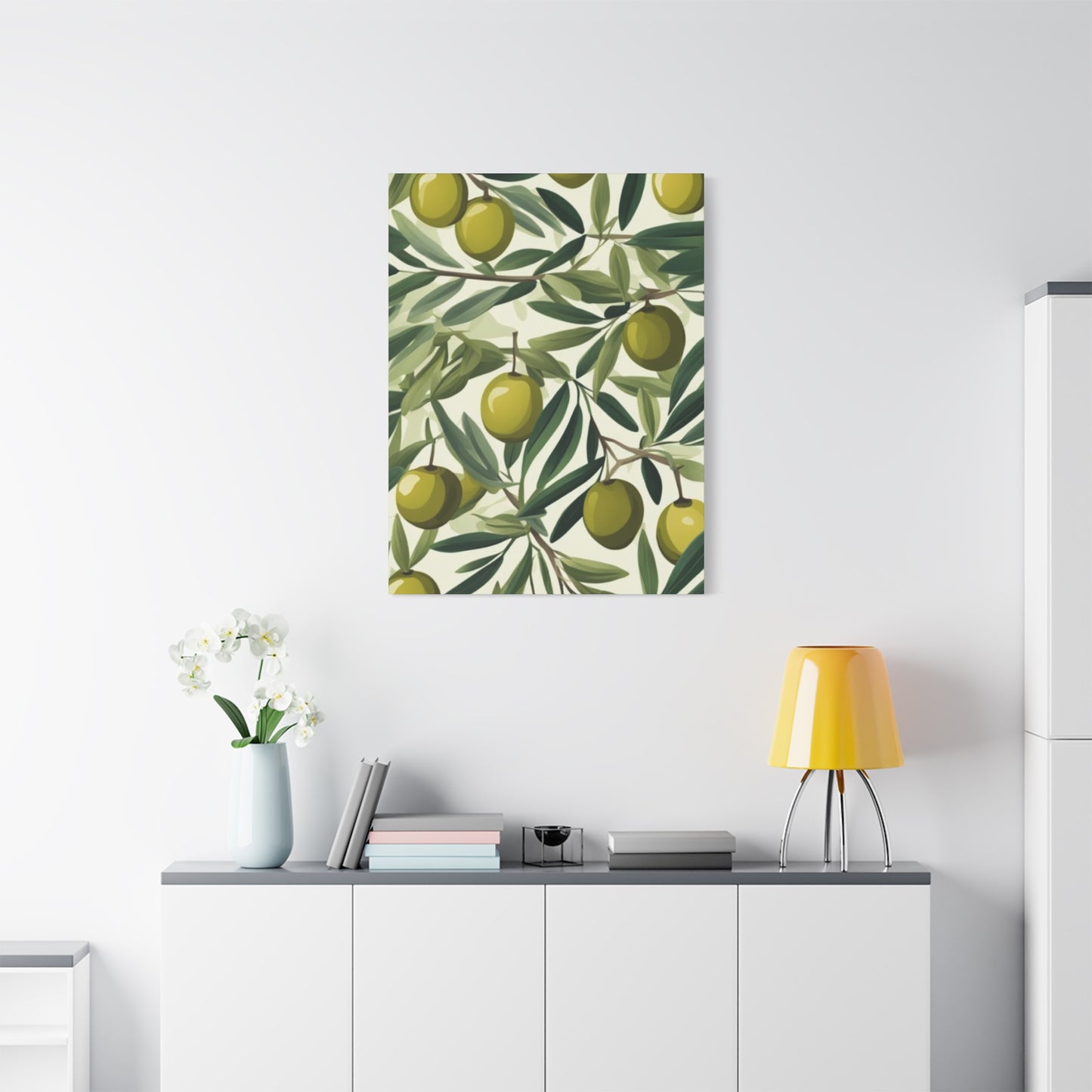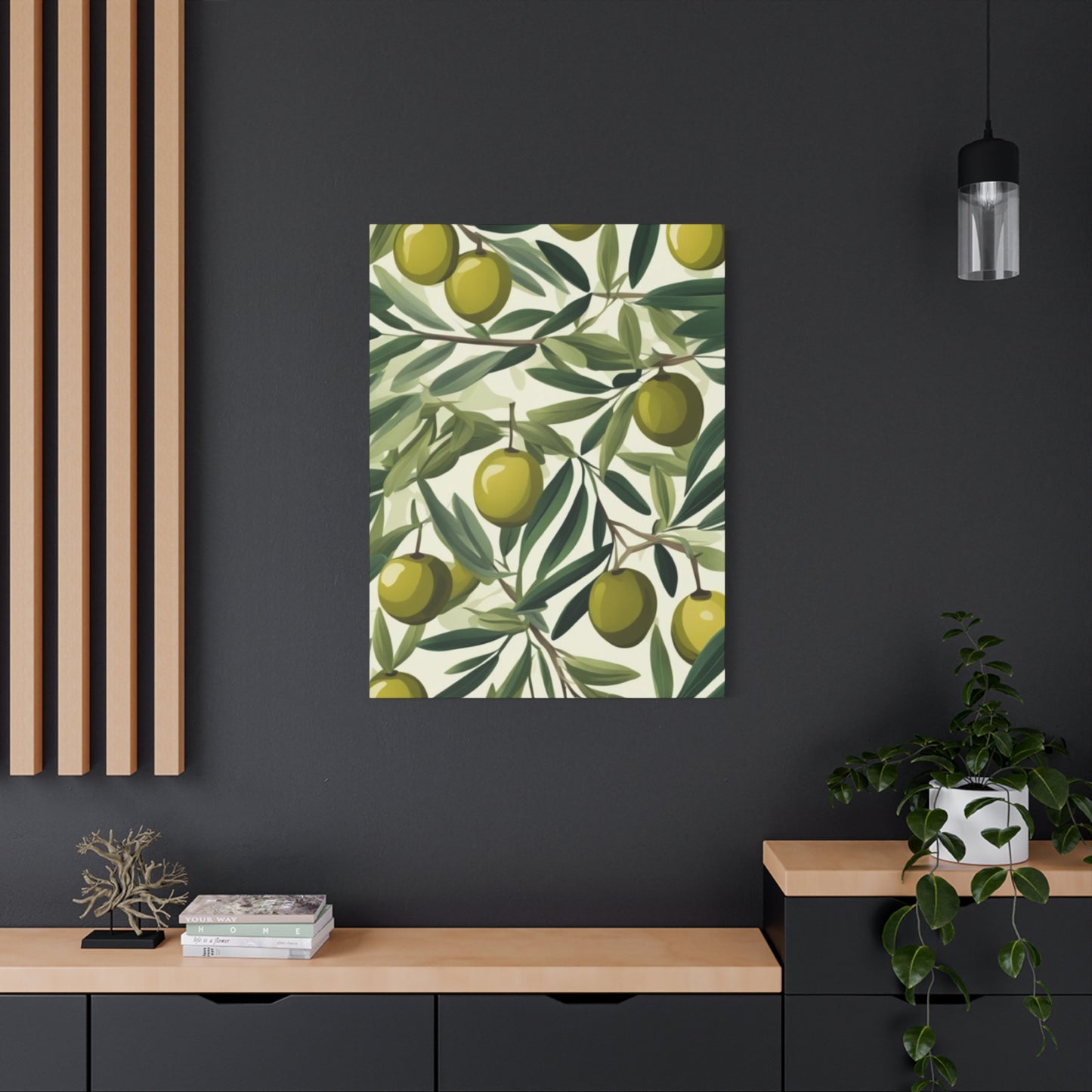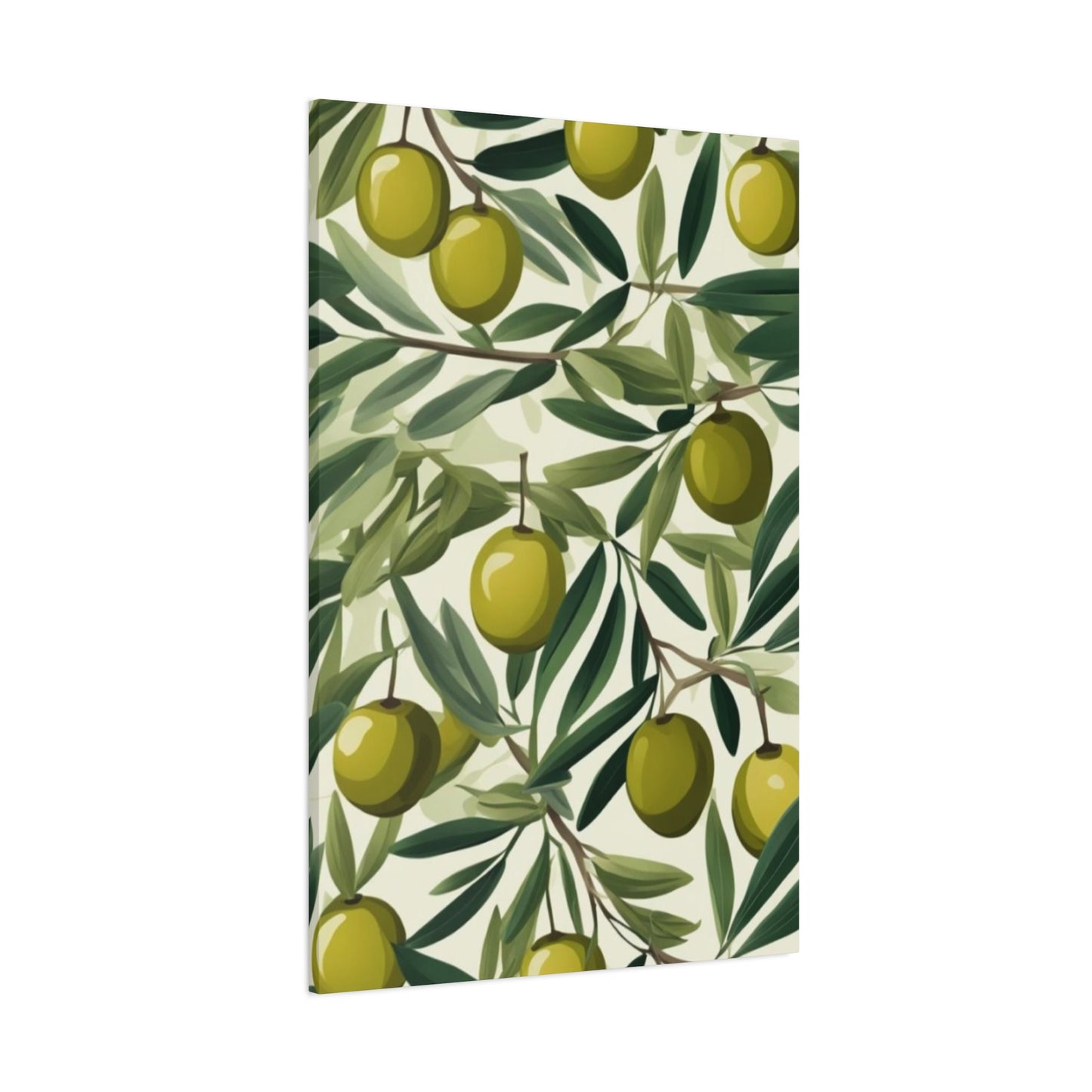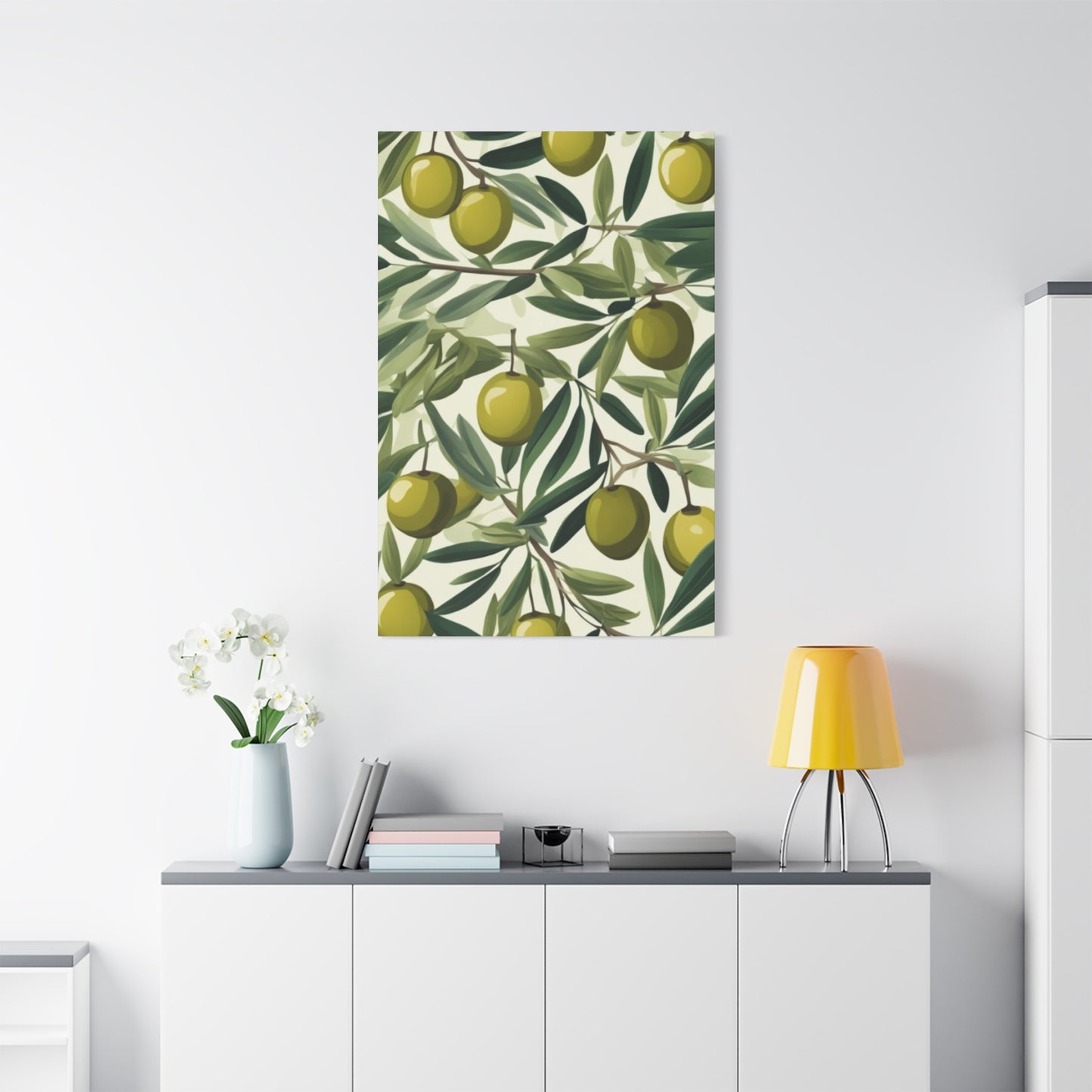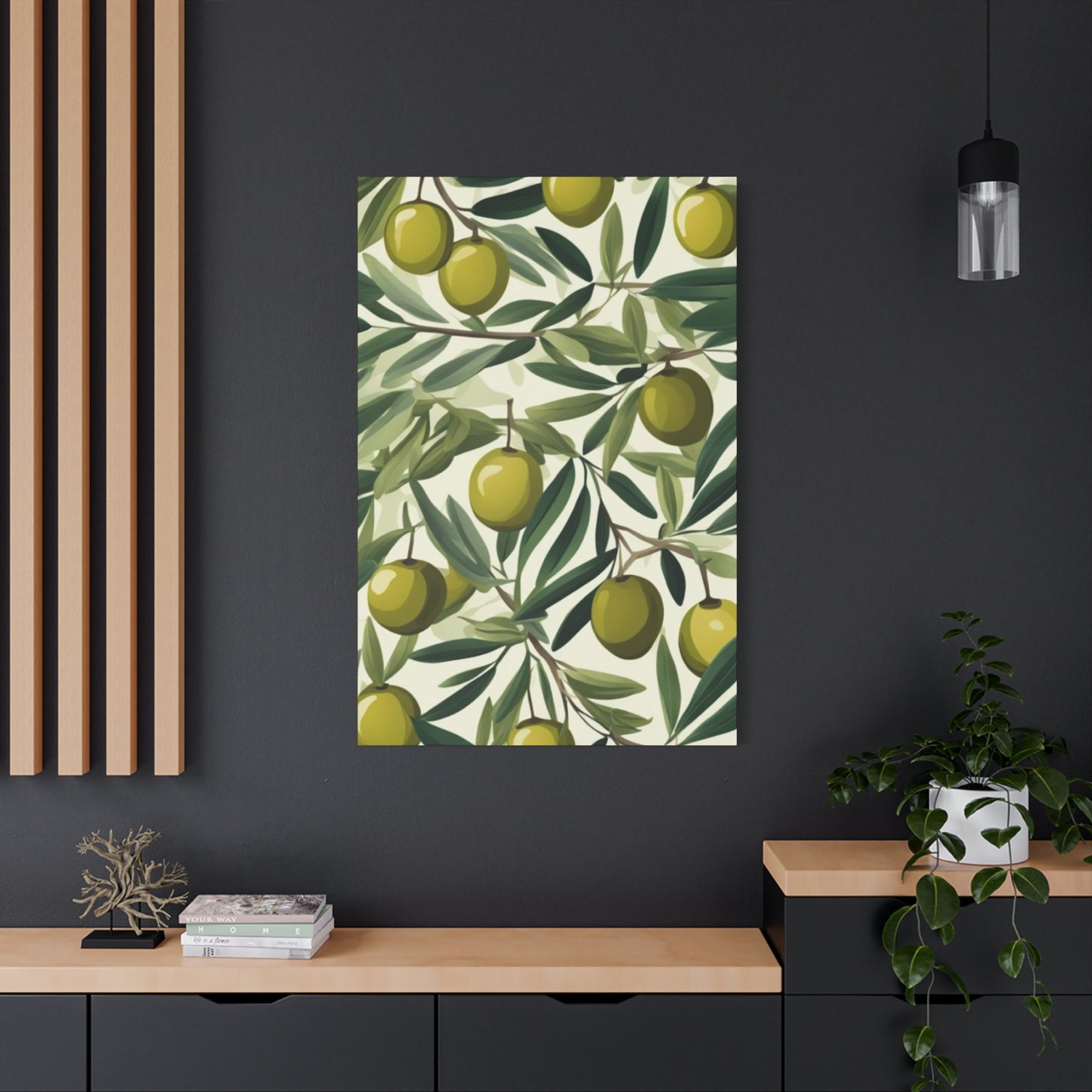Beginner’s Guide to Painting Olive Green Fruit Wall Art at Home
The intersection of color, subject, and medium in home decor is where a space transcends its architectural boundaries and begins to tell a story. Among the myriad of choices available to the discerning decorator, the niche yet profoundly impactful category of olive green fruits wall art stands out as a testament to timeless elegance and natural sophistication. This specific artistic theme offers a unique blend of earthy tranquility, organic beauty, and classic artistic tradition, making it a versatile and compelling choice for a wide range of interior design schemes. It is more than just a decorative element; it is an invitation to embrace a sense of calm, to connect with the subtle beauty of the natural world, and to infuse a living space with a quiet, understated luxury.
The choice of olive green is deliberate and powerful, evoking images of sun-drenched Mediterranean groves, the promise of a bountiful harvest, and the serene quiet of a secluded garden. When this hue is applied to the familiar and comforting forms of fruits, the result is an artwork that feels both classic and contemporary, grounding and uplifting. This exploration delves deep into every facet of olive green fruits wall art, from the psychological underpinnings of its color palette to its practical application in creating harmonious and inviting interiors. We will journey through the history of this theme, analyze its symbolic weight, examine the various artistic mediums that bring it to life, and provide extensive guidance on how to select and display these pieces to achieve the most stunning visual effect. This is an homage to a specific genre of art that offers enduring appeal and a profound ability to transform a house into a sanctuary of style and serenity.
The Psychological Resonance of Olive Green
Color is a silent language that speaks directly to our subconscious, and olive green is a particularly eloquent dialect. Psychologically, it is a color of peace, balance, and harmony. Derived from the foundational stability of green but tempered with the warmth of yellow and the subtlety of brown undertones, olive green strikes a unique emotional chord. Unlike the vibrant energy of lime green or the deep solemnity of forest green, olive possesses a muted, sophisticated quality that promotes a sense of calm and well-being. In the context of home decor, introducing olive green fruits wall art is an act of curating an atmosphere of tranquility. The color is known to reduce anxiety, alleviate stress, and foster a feeling of safety and security. It connects us intrinsically to the natural world, not in its raw, untamed state, but in its cultivated, life-giving aspect, as seen in olive groves and orchards.
This biophilic connection is crucial in modern design, where the desire to bring the outdoors in has become a paramount goal for creating healthier, more humane living spaces. The presence of such art can serve as a gentle, constant reminder of nature's resilience and quiet beauty, providing a mental escape from the hustle and bustle of daily life. Furthermore, olive green is associated with wisdom, maturity, and intellectualism. It is a color that doesn't shout for attention but rather earns it through its understated elegance. This makes olive green fruits wall art an ideal choice for spaces intended for relaxation, contemplation, and quiet conversation, such as a study, library, or a serene living room. Its grounding effect can help focus the mind and soothe the spirit, making it a profoundly functional as well as a beautiful aesthetic choice for interior design.
Olive Green Influences the Atmosphere of a Room
The choice of color for a significant piece of artwork can fundamentally alter the atmosphere, or mood, of an entire room. Olive green, with its unique balance of warmth and coolness, has a particularly versatile and powerful influence. In a space designed for relaxation, like a bedroom or a reading nook, olive green fruits wall art can create a cocooning and restful ambiance. The color's natural, earthy tones are inherently calming to the nervous system, helping to quiet the mind and encourage a state of repose. It acts as a visual anchor, grounding the space and making it feel more secure and private. In more social areas, such as a dining room or kitchen, the same artwork can foster a different kind of atmosphere. Here, the connection to nature and food becomes more prominent.
The art can stimulate the appetite and encourage convivial conversation, evoking the feeling of an alfresco meal in a Mediterranean garden. It promotes a sense of warmth, hospitality, and wholesomeness. The specific shade of olive green plays a significant role. A lighter, more yellow-toned olive can make a room feel more cheerful, open, and energetic, while a darker, more subdued olive will create a mood that is more intimate, dramatic, and sophisticated. The influence of olive green also depends on the light it receives. In a room with abundant natural light, the color will appear more vibrant and alive. In a space with softer, artificial lighting, it will recede into a deeper, more contemplative shade. By carefully considering the desired mood and the existing conditions of a room, you can leverage the powerful atmospheric qualities of olive green fruits wall art to craft a space that not only looks beautiful but feels exactly right.
Perfect Color Pairings for Olive Green Wall Decor
One of the greatest strengths of olive green is its remarkable ability to pair beautifully with a wide range of other colors. This versatility makes integrating olive green fruits wall art into an existing or new color scheme a rewarding creative exercise. For a timeless and organic look, pair it with a palette of warm neutrals. Creamy whites, soft beiges, warm taupes, and sandy tones create a serene and sophisticated backdrop that allows the artwork to stand out without overwhelming the space. This combination is perfect for creating a calming, spa-like atmosphere. To create a more dynamic and contemporary feel, contrast olive green with shades of terracotta, rust, or burnt orange. These earthy, warm colors are complementary to green on the color wheel, and their vibrancy makes the muted olive tone pop. This palette evokes a sense of Mediterranean warmth and is ideal for living rooms or kitchens where you want to create an inviting and energetic vibe.
For a touch of elegance and luxury, pair olive green with metallic accents. Brushed gold, warm brass, or antique bronze hardware, light fixtures, or picture frames can elevate the artwork and the entire room. The warm glow of the metal provides a beautiful contrast to the cool, earthy green. Another sophisticated pairing is olive green with deep, moody colors like charcoal gray, navy blue, or even black. This creates a dramatic and intimate space, where the olive green art acts as a point of natural softness against a dark, enveloping background. For a softer, more romantic feel, consider pairing olive with dusty pink, blush, or muted lavender. This unexpected combination is gentle and charming, creating a look that is both modern and timeless, perfect for a bedroom or a cozy sitting area. The key is to view olive green not as a difficult color, but as a complex and highly adaptable neutral.
The Significance of Texture in Art and Decor
While color and subject are primary considerations, the role of texture in olive green fruits wall art should not be underestimated. Texture adds a tactile and visual depth that can transform a two-dimensional image into a much more immersive and engaging experience. A classic oil or acrylic painting on canvas offers inherent texture. The visible brushstrokes, the thickness of the impasto, and the subtle weave of the canvas itself all contribute to the artwork's character. These textures catch the light in different ways, adding a sense of movement and vitality to the depiction of the fruits. A piece with heavy texture can feel more rustic, expressive, and handmade, while a painting with a smooth, blended surface can feel more refined, realistic, and polished. Canvas prints, while digitally produced, can also mimic this effect. High-quality canvas has its own woven texture, which adds a pleasing, art-gallery feel to the print.
Some prints are even available with hand-applied embellishments or clear gels that replicate the look of brushstrokes, adding a layer of authentic texture. Beyond paintings and prints, consider other mediums. A woven wall tapestry depicting olive green fruits introduces a soft, warm texture that can help to absorb sound and make a room feel cozier and more intimate. A piece of art printed on a raw material like wood or burlap brings a distinctly rustic and organic texture into the space. Even the choice of frame adds a textural dimension. A rough, reclaimed wood frame enhances a farmhouse aesthetic, while a sleek, smooth metal frame contributes to a modern and industrial feel. When selecting your art, think about how its texture will interact with the other textures in the room—the weave of your sofa, the pile of your rug, the grain of your wooden furniture—to create a rich and layered interior design.
Realism Versus Abstraction in Fruit-Themed Artwork
When selecting olive green fruits wall art, one of the most significant stylistic choices you will make is where the piece falls on the spectrum between realism and abstraction. Both approaches offer unique benefits and can dramatically shape the feel of your interior space. A realistic or photorealistic depiction of fruits aims to capture the subject with meticulous detail and accuracy. The artist focuses on rendering precise shapes, subtle color gradations, and convincing textures. The goal is to create a window onto a scene that looks almost tangible, as if you could reach out and touch the smooth skin of an olive or the rough stem of a pear. This style of art is often calming and contemplative. It celebrates the quiet beauty of ordinary objects and showcases incredible artistic skill. Realistic olive green fruit art works exceptionally well in traditional, transitional, and classic interior design schemes, where it adds a touch of timeless elegance and sophistication.
On the other end of the spectrum is abstract art. An abstract interpretation of olive green fruits uses color, shape, and form to capture the essence or feeling of the subject rather than its literal appearance. The artwork might feature bold, expressive brushstrokes, exaggerated shapes, or a color palette that is imaginative rather than strictly natural. Abstract fruit art is dynamic, energetic, and modern. It invites the viewer to interpret the image and engage with it on an emotional level. This style is a perfect fit for contemporary, eclectic, or mid-century modern interiors, where it can serve as a bold statement piece and a conversation starter. Between these two poles lies a vast range of styles, including impressionism, which focuses on the effects of light, and stylization, which simplifies forms for a more graphic or decorative effect. The right choice depends entirely on your personal taste and the overall aesthetic you wish to create in your home.
The Role of Light and Shadow in Depicting Form
The masterful use of light and shadow, a technique known as chiaroscuro, is what gives a two-dimensional depiction of fruit its sense of volume, depth, and reality. This is a critical element to consider when evaluating the quality and impact of a piece of olive green fruits wall art. An artist uses light to define the shape of the fruit. The brightest point, or highlight, tells us where the light source is coming from and helps to describe the texture of the fruit's skin—is it shiny and reflective, or matte and absorbent? The gradual transition from light to dark across the surface of the fruit, known as halftones, is what creates the illusion of its roundness and form. Without these subtle gradations, the fruit would appear flat and lifeless. The shadow side of the fruit, away from the light source, further enhances its three-dimensionality.
But the use of shadow doesn't stop there. The cast shadow, which is the shadow the fruit projects onto the surface it's resting on, is equally important. This element anchors the fruit in its space, giving it weight and presence. It prevents the subject from looking like it's floating aimlessly. In an olive green color scheme, the interplay of light and shadow is particularly beautiful. The highlights might reveal the yellow undertones of the green, while the shadows might deepen into rich, brownish or near-black tones. This creates a complex and sophisticated color harmony within the artwork. When choosing a piece, pay close attention to how the artist has handled light and shadow. A skillful rendering will make the fruits seem almost palpable, adding a level of realism and artistic sophistication that elevates the entire piece from mere decoration to a work of fine art.
Compositional Strategies in Still Life Art
The arrangement of elements within an artwork, or its composition, is a fundamental aspect of its success and visual appeal. In olive green fruits wall art, the composition is what guides the viewer's eye, creates a sense of balance or tension, and ultimately tells a story. One of the most classic compositional structures is the triangle or pyramid. Artists often arrange fruits in a way that the highest point is in the center, with the objects sloping down on either side. This creates a stable, harmonious, and visually pleasing arrangement that has been used for centuries. Another common technique is the use of the rule of thirds. Imagine the canvas is divided into a three-by-three grid. Placing key elements, like the most prominent piece of fruit, along these lines or at their intersections creates a more dynamic and interesting composition than placing the subject directly in the center.
The artist also considers the use of negative space—the empty areas around the fruits. Well-utilized negative space is just as important as the subjects themselves. It gives the fruits room to breathe and can help to create a sense of calm and simplicity or, if used sparingly, a feeling of abundance and energy. The flow and rhythm of the composition are also key. The artist might use curving lines, such as the drape of a cloth or the arc of a vine, to lead the viewer's eye through the painting in a deliberate path. Repetition of shapes and colors can create a sense of unity and rhythm. When you look at different pieces of olive green fruits wall art, try to analyze their composition. Does it feel balanced and calm, or dynamic and energetic? Does your eye move around the piece in a pleasing way? A strong composition is often what separates a good piece of art from a great one.
Exploring Different Artistic Mediums for Your Walls
The medium in which an olive green fruits wall art piece is created has a profound effect on its final look, feel, and cost. Understanding the characteristics of each medium will help you make an informed choice that suits your style and budget. Original oil paintings offer unparalleled depth, richness, and luminosity. The slow-drying nature of oil paint allows artists to blend colors seamlessly, creating incredibly realistic and nuanced depictions. The texture of oil paint, from thin glazes to thick impasto, adds a tactile quality that is unique to the medium. An original oil painting is a one-of-a-kind investment piece. Acrylic paintings are another popular choice for original art. Acrylics dry quickly and have a more matte finish than oils, though this can be altered with various mediums. They are known for their bright, vibrant colors and durability. Acrylics can be used to create a wide range of styles, from hyper-realistic to boldly abstract. Watercolor paintings have a distinctively light, airy, and translucent quality.
This medium is perfect for capturing the delicate nature of fruits and the subtle play of light. Watercolors have a spontaneous and fresh feel, making them a great choice for a more casual or cottage-style interior. Canvas prints are a highly accessible and popular option. These are high-quality reproductions of original artworks or digital designs printed directly onto artist-grade canvas. The canvas is then typically stretched over a wooden frame, ready to hang. Giclée prints represent the highest quality of art reproduction, using archival inks and papers to create prints with incredible color accuracy and longevity. Finally, consider alternative mediums like art printed on wood for a rustic feel, on metal for a sleek modern look, or even woven tapestries for a textural, bohemian vibe. Each medium brings its own personality to the artwork, allowing you to find the perfect expression of the olive green fruit theme for your home.
The Versatility of High-Quality Canvas Prints
For many homeowners, canvas prints represent the perfect intersection of quality, affordability, and style, making them an excellent choice for olive green fruits wall art. One of the primary advantages of canvas is its texture. The woven surface of the canvas adds a touch of classic artistry to the print, distinguishing it from a simple paper poster and giving it a more substantial and sophisticated presence on the wall. This texture interacts beautifully with light, subtly softening the image and reducing glare. The durability of canvas is another key benefit. Modern canvas prints are typically made with robust, artist-grade poly-cotton blends that resist moisture and fading. The inks used are often UV-resistant, ensuring that the rich olive greens and other subtle tones of the artwork will remain vibrant for many years, even in a brightly lit room.
This longevity makes a canvas print a sound decorative investment. Canvas prints also offer incredible versatility in terms of display. They are most commonly sold as "gallery-wrapped" prints, where the canvas is stretched around a sturdy wooden frame (stretcher bars). This allows the artwork to be hung directly on the wall without a traditional picture frame, creating a clean, modern, and three-dimensional look. The image can either end at the edges of the frame or be mirrored or extended to wrap around the sides, adding to the seamless effect. Of course, you can also choose to frame a canvas print if you prefer a more traditional or finished look. The accessibility of canvas prints means that a vast array of styles, from photographic realism to abstract interpretations of olive green fruits, are available to suit any taste and budget, making it easier than ever to find the perfect piece for your space.
Timeless Elegance of Original Oil and Acrylic Paintings
While prints offer accessibility, there is an undeniable magic and prestige associated with owning an original piece of art. An original oil or acrylic painting of olive green fruits is not just a decoration; it is a unique creation, a direct product of an artist's skill, vision, and time. This one-of-a-kind nature gives the piece a special energy and presence that a reproduction can never fully replicate. Oil paintings, with their centuries-long tradition, are prized for their depth and luminosity. The oil medium allows for a richness and subtlety of color that is truly breathtaking. An artist can build up layers of translucent glazes to create a glowing effect from within the painting, making the fruits appear incredibly lifelike and vibrant. The physical texture of the brushstrokes on the canvas is a visible record of the artist's process, adding a layer of personality and dynamism to the work.
An original oil painting is a statement of enduring quality and a connection to the grand tradition of art history. Acrylic paintings offer a more modern alternative but are no less valuable as original works. Known for their versatility and permanence, acrylics can be used to achieve a vast range of effects, from the smooth blending seen in oil paintings to the bold, graphic styles of pop art. They often have a more contemporary feel and can bring a fresh, vibrant energy to a room. Investing in an original painting, whether oil or acrylic, is a deeply personal choice. It is an opportunity to support a living artist and to bring an object of unique and lasting beauty into your home. An original piece of olive green fruits wall art will become a cherished focal point, a conversation starter, and an heirloom to be enjoyed for generations.
Delicate Beauty of Watercolor Art
Watercolor as a medium possesses a unique set of characteristics that make it exceptionally well-suited for depicting the natural and organic subject of fruits. A piece of olive green fruits wall art rendered in watercolor brings a quality of lightness, spontaneity, and ethereal beauty to a space that is distinct from any other medium. The defining feature of watercolor is its translucency. Unlike opaque mediums like oil or acrylic, watercolor paint is applied in thin washes, allowing the white of the paper to shine through. This creates a natural luminosity and a sense of airiness. For a subject like fruit, this technique is perfect for capturing the delicate, light-filtering quality of a grape's skin or the soft, powdery bloom on a fig. The artist builds up color and form through successive layers of transparent washes, a process that requires great skill and foresight, as mistakes are not easily corrected.
This inherent challenge imbues a successful watercolor with a sense of masterful delicacy. Watercolors also excel at capturing movement and fluidity. The way the pigments mingle and bloom on wet paper creates soft edges and organic patterns that feel very natural and alive. This can be used to great effect in a still life, preventing the composition from feeling too rigid or static. The result is an artwork that feels fresh, immediate, and full of light. Due to its delicate nature, watercolor art is almost always displayed under glass in a frame, which adds to its refined and precious quality. Choosing a watercolor piece is an excellent way to bring a gentle, calming, and sophisticated touch of nature into your home.
The Modern Appeal of Metal and Acrylic Prints
For those with a contemporary, minimalist, or industrial design aesthetic, traditional canvas or framed paper may not be the right fit. This is where modern mediums like metal and acrylic prints offer a compelling alternative for showcasing olive green fruits wall art. Metal prints, typically made by infusing dyes directly onto a sheet of coated aluminum, are known for their stunning vibrancy and luminescence. The way light reflects off the metal surface makes colors appear incredibly rich and saturated. An image of an olive on a metal print would have a depth and clarity that is almost hyper-realistic. These prints are sleek, frameless, and have an ultra-modern feel. They are also extremely durable, waterproof, and scratch-resistant, making them a practical choice for high-traffic areas or even kitchens and bathrooms where humidity might be a concern.
Acrylic prints offer a similar contemporary appeal but with a different visual effect. In this process, a photographic print is face-mounted to a sheet of polished acrylic or plexiglass. The acrylic layer enhances the image, giving it a sense of depth and a glossy, almost wet look. The light passes through the acrylic and refracts, making the colors appear more brilliant and the details sharper. Like metal prints, they are typically displayed without a frame, often with standoff bolts that make the art appear to float off the wall. Both metal and acrylic prints transform a piece of olive green fruits wall art into a bold, high-impact statement piece. They emphasize clean lines, vibrant color, and modern materials, making them a perfect choice for anyone looking to bridge the gap between classic subject matter and cutting-edge presentation.
Olive Green Art in Modern Farmhouse Interiors
The modern farmhouse style, with its blend of rustic charm and clean, contemporary lines, provides a perfect backdrop for olive green fruits wall art. This design aesthetic celebrates simplicity, comfort, and a connection to nature, making the earthy tones and organic subject matter of the art a natural and harmonious fit. In a typical modern farmhouse interior, the color palette is dominated by neutrals like white, cream, and gray, with natural wood tones and black accents. Olive green serves as an ideal accent color within this scheme. It introduces a touch of sophisticated, muted color without disrupting the overall sense of calm and simplicity. A large canvas depicting a branch of olives, hung on a shiplap wall in a living room, can add a layer of organic texture and color that complements the rustic wood elements and the clean white walls.
The artwork bridges the gap between the "farmhouse" and "modern" aspects of the style. The fruit subject matter resonates with the agricultural roots of the farmhouse aesthetic, evoking images of orchards and harvests. At the same time, the art can be presented in a modern way—a simple gallery-wrapped canvas or a piece in a sleek, minimal frame—that aligns with the contemporary side of the design. Consider pairing the art with other natural textures, such as a jute rug, linen pillows, or a chunky knit throw, to create a layered and inviting space. The olive green fruits wall art becomes a key element in crafting a room that feels both lived-in and thoughtfully curated, perfectly embodying the warm, welcoming spirit of the modern farmhouse style.
Sophistication in Minimalist and Contemporary Spaces
While it has a natural home in rustic designs, olive green fruits wall art can also be a stunning addition to minimalist and contemporary interiors. In these styles, which prioritize clean lines, uncluttered surfaces, and a "less is more" philosophy, a single, carefully chosen piece of art can have an immense impact. In a minimalist setting, the artwork serves as a deliberate introduction of color and organic form into an otherwise highly structured and neutral environment. The key is to choose a piece with a simple, uncluttered composition. A painting or print featuring a single pear or a minimalist arrangement of a few olives against a stark, neutral background would be ideal. The focus is on the purity of the form and the subtlety of the color.
The olive green provides a soft, natural counterpoint to the often stark black, white, and gray palette of minimalism, preventing the space from feeling cold or sterile without adding unnecessary clutter. For contemporary interiors, which can be a bit more expressive than strict minimalism, you have more freedom with style. An oversized abstract piece that uses olive green and fruit forms as a jumping-off point for a more expressive exploration of color and shape can become a dynamic and exciting focal point. Alternatively, a hyper-realistic painting in a sleek, modern frame can provide a fascinating contrast between classic technique and contemporary surroundings. In both minimalist and contemporary designs, the art is not just an accessory; it is an essential component that adds personality, warmth, and a vital touch of nature to a highly curated space.
Enhancing Rustic and Mediterranean-Inspired Decor
For rustic and Mediterranean-inspired interiors, olive green fruits wall art is not just a complementary element; it is a foundational piece that speaks to the very soul of these design styles. These aesthetics are rooted in a deep appreciation for natural materials, handcrafted quality, and a connection to the sun-drenched landscapes of Southern Europe. Olive green is a cornerstone of the Mediterranean color palette, directly referencing the olive groves that dot the hillsides of Italy, Greece, and Spain. An artwork featuring olives is therefore the most authentic and thematic choice possible. It instantly transports you to that region, evoking a sense of rustic elegance, tradition, and simple, sun-baked living. Pair this art with other hallmark elements of the style: walls with a textured plaster or stucco finish, terracotta floor tiles, exposed wooden beams, and wrought iron details.
In a rustic interior, which may draw from a broader range of influences like a French country cottage or a Tuscan farmhouse, the art serves a similar purpose. It enhances the earthy, lived-in feel of the space. A piece of art on a distressed wood panel or in a heavily patinated frame would be particularly effective. The subject of fruits aligns perfectly with the "farm-to-table" ethos that is often associated with these styles. To complete the look, surround the artwork with other natural elements like earthenware pottery, baskets of fresh produce, and rustic linen textiles. In these settings, the olive green fruits wall art is more than just decor; it's a piece of storytelling that completes the narrative of a home inspired by nature, history, and the simple beauty of a life lived close to the land.
A Natural Choice for the Kitchen and Dining Area
The kitchen and dining room are arguably the most natural and fitting locations in the home for olive green fruits wall art. These are the spaces dedicated to nourishment, community, and the celebration of food, making artwork with a culinary theme a perfect and intuitive choice. In the kitchen, where functionality often reigns, a beautiful piece of art can provide a much-needed decorative touch, softening the hard surfaces of cabinetry and appliances. Hanging a piece depicting olives, pears, or grapes can serve as a visual inspiration for cooking, connecting the act of preparing food back to its natural origins. The color olive green is also wonderfully calming, which can be a welcome attribute in the often-hectic environment of a busy kitchen.
It complements a wide range of kitchen styles, from the classic white shaker kitchen, where it adds a beautiful pop of earthy color, to a kitchen with dark wood cabinets, where it can blend in to create a rich, moody atmosphere. In the dining room, the artwork sets the stage for the meals and conversations that will take place there. A large, elegant still life of fruits can create a sophisticated and inviting ambiance, reminiscent of a fine dining experience. It stimulates the appetite and serves as a beautiful backdrop for gatherings with family and friends. The theme of bounty and harvest inherent in fruit art is particularly appropriate for a space dedicated to sharing meals. Whether it's a small print in a kitchen breakfast nook or a grand, oversized canvas in a formal dining room, olive green fruits wall art enhances the purpose and pleasure of these essential home spaces.
Unexpected Elegance in Living Rooms and Bedrooms
While the kitchen and dining room are obvious choices, placing olive green fruits wall art in a living room or bedroom can create a look of unexpected elegance and sophisticated originality. It moves the theme beyond its literal culinary connection and allows it to be appreciated for its pure aesthetic and atmospheric qualities. In a living room, a piece of olive green fruit art can serve as a serene and grounding focal point. In a room filled with upholstered furniture, electronic devices, and various decorative objects, the simple, organic subject matter of the art can provide a moment of visual calm. The olive green color acts as a sophisticated neutral, capable of tying together other elements in the room, from house plants to colored throw pillows.
It can bring a touch of nature's tranquility to the main social hub of the home, fostering a relaxed and welcoming environment for both residents and guests. A large abstract piece can add a modern, artistic flair, while a classic, realistic still life can lend an air of timeless tradition. In the bedroom, the primary goal is to create a peaceful and restorative sanctuary. The calming psychological properties of olive green make it an ideal color for this space. An artwork depicting gentle, rounded fruit forms is soft and soothing to the eye, promoting a sense of tranquility conducive to rest. Hung above the headboard, it can anchor the room's design and create a beautiful and serene focal point. In this context, the fruit symbolism of fertility and love (as with pears) can also add a subtle layer of romantic meaning to the space.
Art of Creating a Themed Gallery Wall
A gallery wall is a curated collection of artworks, photographs, and other objects displayed together to create a cohesive and impactful visual statement. Creating a gallery wall centered around the theme of olive green fruits wall art allows for a creative and highly personal display that tells a rich visual story. The key to a successful themed gallery wall is to create unity through the theme while introducing variety in other elements. Start with a central, anchor piece—perhaps a larger canvas print of an olive branch. Then, build around it with smaller pieces. You can maintain the olive green color scheme but vary the subject matter: one piece might be a detailed study of a single pear, another a cluster of grapes, and a third a more abstract interpretation of fruit forms.
To add more variety, incorporate different mediums. Mix a canvas print with a framed watercolor, a small original acrylic painting, and even a textural piece like a small woven hanging in a complementary color. Vary the frames as well; a mix of simple black frames, natural wood frames, and ornate gold frames can add eclectic charm, as long as they are thoughtfully arranged. You can also include non-art items that fit the theme, such as a beautifully framed antique botanical illustration of an olive tree or a small, decorative ceramic plate with a fruit motif. The layout of the gallery wall can be structured and symmetrical for a formal look, or more organic and asymmetrical for a relaxed, eclectic feel. This approach allows you to explore the theme of olive green fruits in depth, creating a dynamic and deeply personal feature in your home.
Importance of Proper Lighting for Your Artwork
The way you light your olive green fruits wall art can have as much impact on its appearance as the choice of frame or its placement in the room. Proper lighting brings the artwork to life, revealing the true depth of its colors, the subtlety of its details, and the richness of its textures. Poor lighting, on the other hand, can leave it looking dull, flat, and insignificant. The first rule is to avoid direct sunlight. The ultraviolet rays in sunlight can cause the pigments in any artwork—whether it's a print or an original painting—to fade over time. Position your art on a wall that does not receive harsh, direct sun. For artificial lighting, dedicated accent lighting is the most effective solution. One popular option is a ceiling-mounted accent light, such as a spotlight or a track light fixture. These can be precisely aimed at the artwork to illuminate it directly. For best results, the light should be aimed at the center of the artwork at a 30-degree angle.
This angle minimizes glare and prevents you from casting a shadow on the piece when you stand in front of it. Another elegant solution is a picture light, which is a lamp mounted directly on the wall above the artwork or attached to the frame itself. These provide focused, dedicated light and add a classic, gallery-like feel to the display. When choosing light bulbs, look for those with a high Color Rendering Index (CRI) of 90 or above. A high CRI ensures that the colors of the artwork will be rendered accurately, showing off the nuanced shades of olive green to their best effect. The color temperature of the bulb, measured in Kelvins (K), should also be considered. A warm white light (around 2700-3000K) is generally preferred for homes as it creates a cozy and inviting atmosphere.
Selecting the Right Size and Scale for Your Space
Choosing the correct size and scale for your olive green fruits wall art is one of the most critical decisions you will make in the selection process. The right scale will create a sense of balance and harmony, while the wrong scale can make an entire room feel "off." A general rule of thumb for hanging art over a piece of furniture, like a sofa or a sideboard, is that the artwork should be approximately two-thirds to three-quarters the width of the furniture. For example, if your sofa is 90 inches wide, you should look for a piece of art (or a grouping of pieces) that is between 60 and 67 inches wide. This ensures that the art is anchored by the furniture and they feel like a cohesive unit. If you are hanging a single piece of art on a large, empty wall, go big. A small piece will be dwarfed by the space.
A large, oversized canvas can fill the wall and create a dramatic, high-impact focal point. Don't be afraid to make a bold statement. When creating a gallery wall, think of the entire collection as a single unit. The overall footprint of the gallery wall should follow the same rules of scale relative to the furniture it hangs above. The height at which you hang the art is also crucial. The center of the artwork (or the center of the entire gallery wall grouping) should be at average eye level, which is typically considered to be between 57 and 60 inches from the floor. This is the standard used by art galleries and museums, and it ensures that the art is positioned for comfortable viewing. By paying careful attention to size and scale, you ensure that your beautiful artwork is presented to its best advantage.
Balancing Artwork with Furniture and Other Decor
A piece of olive green fruits wall art does not exist in a vacuum; it is part of a larger ecosystem that includes your furniture, rugs, textiles, and other decorative objects. Achieving a sense of balance and cohesion between the artwork and these other elements is the hallmark of a well-designed room. The style of the artwork should have a relationship with the style of your furniture. A sleek, modern metal print of an abstract olive might look out of place above a rustic, heavily distressed wooden console table. Conversely, a traditional oil painting in an ornate gold frame might clash with a minimalist, low-profile sofa. The goal is not necessarily to match styles perfectly, but to create a thoughtful conversation between them. A classic painting can provide an interesting point of contrast in a modern room, but it needs to be a deliberate choice.
Color is another key element for creating balance. Your artwork can be the source of your accent color palette. Pull out the different shades of green, yellow, and brown from your olive green fruits wall art and repeat them in smaller doses around the room—in throw pillows, a vase, or a rug pattern. This creates a sense of rhythm and intention, making the room feel unified. Consider the visual weight of the different elements. A large, dark piece of art has a heavy visual weight. It should be balanced by a substantial piece of furniture beneath it. A collection of smaller, lighter pieces, like watercolors, has a lighter visual weight and can be paired with more delicate furniture. The goal is to create a dynamic equilibrium where no single element overwhelms the others, resulting in a space that is harmonious and visually pleasing from every angle.
Conclusion:
In the vast and ever-changing world of interior design, certain themes possess a timeless quality, an enduring appeal that transcends fleeting trends. Olive green fruits wall art firmly belongs in this esteemed category. It is a choice that weaves together the profound tranquility of a unique color, the comforting familiarity of an organic subject, and the rich heritage of still life art into a single, cohesive statement of style. Throughout this extensive exploration, we have journeyed through the psychological and historical depths of the color olive green, recognizing its power to foster peace, balance, and a connection to the natural world. We have seen how the humble fruit, as a subject, carries with it centuries of symbolic meaning, representing everything from abundance and hospitality to the simple, profound beauty of everyday life.
This art form is not a monolithic entity but a diverse and versatile genre. It can be rendered in a multitude of mediums, each offering a distinct personality—from the luminous depth of an original oil painting to the sleek modernity of a metal print, from the delicate translucency of a watercolor to the textural warmth of a woven tapestry. This adaptability allows it to find a harmonious home in a vast array of interior design schemes. It can enhance the rustic charm of a modern farmhouse, provide a sophisticated pop of color in a minimalist space, and feel perfectly at home in a sun-drenched Mediterranean-inspired villa.
It can serve as a dramatic focal point in a living room, an appetite-stimulating accent in a dining area, or a serene and unexpected touch of elegance in a bedroom. Choosing to incorporate olive green fruits wall art into your home is more than a decorative decision. It is an investment in creating an atmosphere. It is an act of curating a space that feels grounded, sophisticated, and deeply connected to the quiet, life-affirming beauty of nature. It is a testament to the idea that the most beautiful interiors are those that not only please the eye but also soothe the soul, offering a sanctuary of style and serenity for years to come.

















